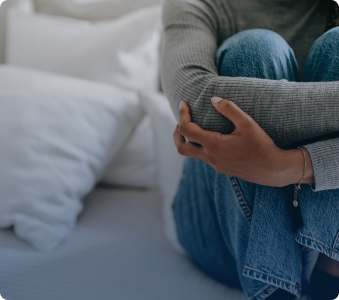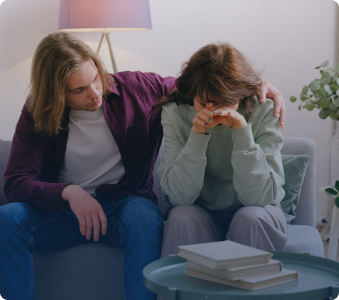Major Depressive Disorder with a Seasonal Pattern (formerly known as seasonal affective disorder, or SAD) is characterized by recurrent episodes of depression in late fall and winter, alternating with periods of normal mood the rest of the year.
Researchers at the National Institute of Mental Health were the first to suggest this condition was a response to decreased light and experimented with the use of bright light to address the symptoms. Scientists have identified that the neurotransmitter serotonin may not be working optimally in many people who experience this disorder.
The prevalence of this condition appears to vary with latitude, age, and sex:
- Prevalence increases among people living in higher/northern latitudes.
- Younger persons are at higher risk.
- Women are more likely than men to experience this condition.
Symptoms
This disorder’s most common presentation is of an atypical depression. With classic depression, people tend to lose weight and sleep less. This condition is the kind of atypical depression often seen in bipolar disorder—people tend to gain weight and sleep more.
Although not everyone experiences all the following symptoms, the classic characteristics of Major Depressive Disorder with a Seasonal Pattern include:
- Hypersomnia (or oversleeping)
- Daytime fatigue
- Overeating
- Weight gain
- Craving carbohydrates
Many people may experience other symptoms as well, including:
- Decreased sexual interest
- Lethargy
- Hopelessness
- Suicidal thoughts
- Lack of interest in usual activities and decreased socialization
Diagnosis
The key to an accurate diagnosis of this condition is recognizing its pattern. Symptoms usually begin in October/November and subside in March/April. Some people begin to experience a “slump” as early as August, while others remain well until January. Regardless of the time of onset, most people don’t feel fully “back to normal” until early May.
For a diagnosis to be made, this pattern of onset and remission must have occurred during at least a two-year period, without the occurrence of any non-seasonal episodes during that same period.
This means you will not receive this diagnosis the first time you experience symptoms. If you believe you may have a seasonal depressive pattern, it’s important to pay attention to the pattern. Track your symptoms, noting when they begin and when they subside. This self-awareness can help. Mental health professionals will ask you about your observations and also your family history since mood disorders tend to run in families.
Treatment
As with most depressive disorders, the best treatment includes a combination of antidepressant medications, cognitive-behavioral therapy, and exercise. Unlike other depressive disorders, this condition can also be treated with light therapy. Light therapy consists of regular, daily exposure to a “light box,” which artificially simulates high-intensity sunlight. Be aware that ordinary indoor light is not sufficient to treat this condition.
Some primary care doctors have experience treating this disorder. Remember that this condition is a subset of major depression. If your primary care doctor prescribes you an antidepressant, orders you a lightbox and sends you to a social worker—and you have trouble the following year—consider seeking consultation from a psychiatrist. Treatment planning needs to match the severity of the condition for each individual.
Planning Ahead
If you know you have a seasonal pattern, ask yourself “How can I plan for this?” Because this disorder has a specific pattern, those who experience it can prepare for its arrival in the following ways, for example:
- Exercise more toward the end of summer
- Get into therapy around September
- Start your lightbox in October
- Plan a vacation to a sunny spot in January
Some people may require treatment only during the time of the year in which they experience symptoms, or they may need treatment that begins before symptoms are most severe. Others may choose year-round treatment.
Reviewed August 2017

